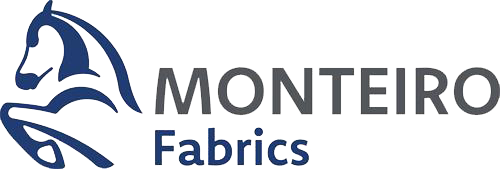
Rethinking Hotel Design: How PEEL Sustainable Fabrics Can Transform Hospitality Upholstery
Imagine If Every Hotel Chose PEEL

The resurgence of business and tourism travel in the post-pandemic world has fueled a boom in hotel renovations and new constructions [2]. Global demand for hospitality upholstery fabrics is expected to grow by 30% between 2023 and 2028. Currently, approximately 67% of the fabrics used in this sector are synthetic, relying heavily on fossil-based raw materials [1].
On average, each hotel room requires between 11 and 17 m² of upholstery fabric, priced between €7 and €15 per square meter. Based on projected growth, 2 to 6 million new hotel rooms in Europe alone may need upholstering by 2028. With an average fabric weight of 450 g/m², this translates to 11 to 24 thousand tons of material—nearly all of it synthetic.
Now, imagine if all of this synthetic fabric were replaced with PEEL—a renewable, plant-based alternative developed by Monteiro Fabrics. This single shift could eliminate the need for 19 to 41 thousand tons of fossil-based inputs globally, replacing them with renewable resources that are significantly more biodegradable and less ecotoxic (according to Monteiro Fabrics internal composting studies and life cycle assessments)
65% Biobased *
Using PEEL as an alternative to synthetic upholstery textiles in the hospitality sector – estimated projection for 2028.
-
Region | Estimated Savings
Europe | 5,000 – 10,000 ton
North America | 5,000 – 11,000 ton
Asia Pacific | 7,000 – 14,000 ton
Other Regions | 3,000 – 6,000 ton
➤ Total 19,000 – 41,000 ton
-
*ASTM D6866-22-Method B
Upholstery Fabric by the Numbers
A glance at the data:
Global Consumption (2023): 3.9 billion €
Expected Growth by 2028: +30%
Europe’s Share of Demand Growth: 25,2%
Hospitality Application Share: 37%
Share of Synthetic Fabrics: 67%
-
Hotel Room Upholstery Use:
- Average Fabric Use: 11–17 m²/room
- Price Range: 7–15 €/m²
- Average Fabric Weight: 450 g/m²
- Re-upholstery Cycle (Mid-range Hotels): 5–7 years
Durability: The Other Side of Sustainability
Another essential aspect of sustainable design is durability. High-performance upholstery—like PEEL—can drastically reduce the need for frequent refurbishments. Mid-range hotels typically renovate every 5 to 7 years, but if the lifespan of upholstery is extended by just 3 to 5 years, material usage could drop by as much as 40%.
Durability is largely defined by rubbing resistance. While standard uncoated fabrics rarely exceed 100,000 Martindale cycles, high-end materials like PEEL can reach 400,000 cycles (ISO 5470-2). PEEL also delivers superior resistance to fraying, staining, and shape deformation, all while remaining easy to clean and disinfect.
Leather is often seen as a naturally durable and biobased contract upholstery alternative—but it also presents notable drawbacks. High costs and limited availability make it insufficient to meet the scale of demand in the hospitality sector. Furthermore, to match the cleanability and surface resistance of PVC-coated fabrics, leather must often be heavily coated—diminishing the relevance of its biobased appeal.
PEEL provides a more practical solution: it matches or exceeds leather in durability and hygiene performance, while being more cost-effective, widely available, and aligned with the growing demand for scalable, sustainable materials.
Procurement strategies in the hospitality industry are evolving. Durability metrics and life cycle cost analyses are replacing simplistic price-based decisions [1]. In this context, PEEL stands out—not only as a sustainable choice but also as a smart, long-term investment that reduces waste and enhances operational efficiency.
PEEL collection
PEEL offers a forward-looking solution—minimizing environmental impact, maximizing durability, and aligning with the hospitality sector’s shifting priorities.
Imagine if every hotel chose PEEL. The impact would be transformative.
Local Case Study – Porto

Porto
Porto is undergoing a tourism-driven transformation. With 122 new hotel projects currently underway, the city will soon add nearly 12,000 new beds to its existing 23,000-bed capacity—21,500 of which are in hotels [3].

Hotel
These new developments alone will require an estimated 71 to 111 tons of upholstery fabric. When regular refurbishments of the existing hotel stock are considered, the demand—and environmental impact—grows substantially.

Sustainablility
By choosing a bio-based alternative like PEEL over conventional synthetics, Porto’s hospitality sector could avoid using 48 to 74 tons of fossil-derived raw materials. This would be a meaningful step toward a more sustainable, climate-conscious urban future.
Bibliography
[1]
“pmarketresearch,” Fevereiro 2025. [Online]. Available: https://pmarketresearch.com/chemi/commercial-grade-upholstery-fabric-market/. [Acedido em Julho 2025].
[2]
L. Mirani, “Wish you weren't here - The shock of 'overtourism' will subside in 2025,” The Economist, p. 76, Dezembro 2024.
[3]
“Jornal Notícias,” 26 fevereiro 2025. [Online]. Available: https://www.jn.pt/106747712/porto-vai-ter-mais-122-novos-hoteis/. [Acedido em 2025 julho 2025].
Luísa Sousa
Sustainability Projects coordination
Group Monteiro Ribas
[2]
L. Mirani, “Wish you weren't here - The shock of 'overtourism' will subside in 2025,” The Economist, p. 76, Dezembro 2024.
[3]
“Jornal Notícias,” 26 fevereiro 2025. [Online]. Available: https://www.jn.pt/106747712/porto-vai-ter-mais-122-novos-hoteis/. [Acedido em 2025 julho 2025].
Article written by:
Luísa Sousa
Sustainability Projects coordination
Group Monteiro Ribas

















